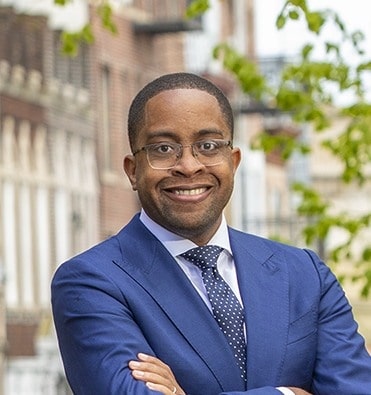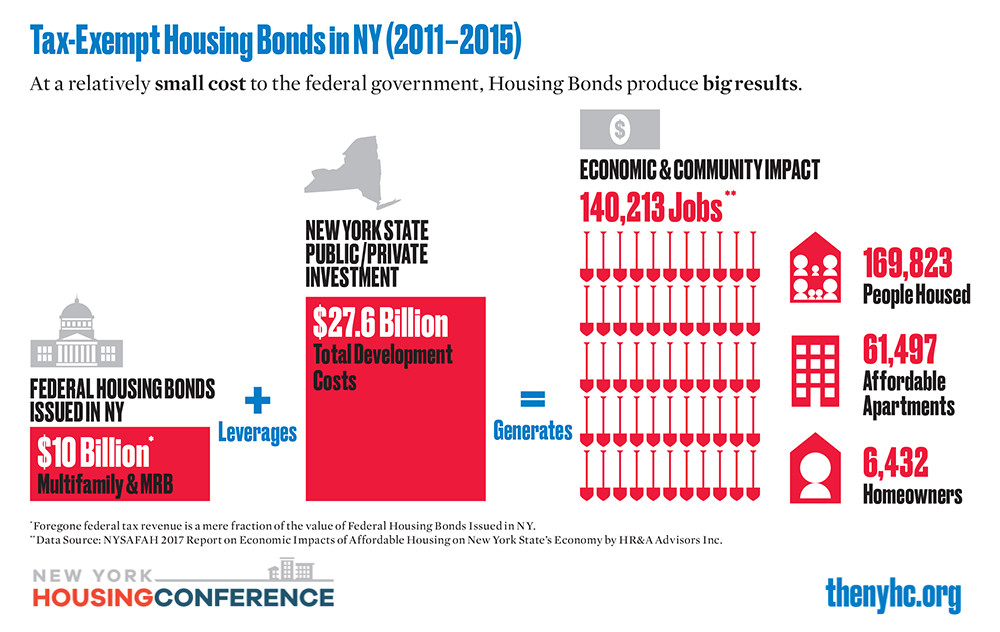
NYS Senator
Housing Positions and Proposals
- Rebuild NYC will spearhead the creation and preservation of one million homes across New York City over the next ten years.
- Revitalizing NYCHA: Invest in NYCHA by supporting its ongoing renovation work (150,000 units) and building 95,000 mixed-income housing units to generate revenue that helps sustain NYCHA for generations to come.
- Mega Midtown: Build up to 85,000 new mixed-income units in Midtown Manhattan by increasing allowable density on sites where residential towers are already allowed.
- New Neighborhoods: Build up to 85,000 new housing units through the creation of New Neighborhoods throughout New York City.
- Sandwich Rezonings: Build up to 85,000 new housing units in industrial areas that are sandwiched between residential neighborhoods.
- Homes Not Shelters: Reallocate funding being used to finance shelter construction to instead construct 50,000 new units of permanent housing for voucher holders.
- Mixed Income on Public Sites: Create templates for the redevelopment of old public
- Small building streamlining: 50,000
- Organic growth: 200,000
- Reimagining preservation: 150,000 preserved buildings as mixed-use properties with up to 50,000 new mixed-income housing units above public service facilities like schools and libraries.
- Small Building Streamlining: Financing and reforms to spur the creation of 50,000 new housing units in small buildings that are seven stories or fewer, with a focus on homeownership opportunities.
- Organic Growth: 200,000 new housing units that we conservatively assume will be built through organic growth absent any of the above.
- Reimagining Preservation: Preserve and protect up to 150,000 units at risk of becoming uninhabitable or whose residents are at risk of being displaced
Responses to NYHC Questionnaire
What are your priorities in an affordable housing plan – including rental and homeownership?
New York City’s capital funding for housing decreases from $4.3 billion in FY2026 to $2.4 billion in FY2027 or less the following years. What are your priorities for the ten-year capital plan in terms of how much funding will you allocate annually? How will you pay for it?
I believe we must maintain a housing capital budget of over $4 billion annually, but more importantly, we must change how we spend it. Continuing down the same path, simply increasing the price tag, will not solve our crisis. We have to be smarter, faster, and more strategic in how we build.
New York is in a housing crisis, and the only way out is to build more housing. My Rebuild NYC mandate will create and preserve one million homes over the next decade, and do it in a way that increases affordable housing across all neighborhoods.
That starts with reforming NYCHA. We will transform NYCHA into an engine for housing growth by allowing it to build mixed-income housing on its land. If tenants support the new development plans, the revenue generated can be reinvested into repairs and modernization of all the existing units. We will also cut red tape across the board so that affordable housing is cheaper and easier to build, ensuring we get much more value from every public dollar we invest.
We’ll rezone areas like Midtown and industrial corridors sandwiched between residential neighborhoods while protecting New Yorkers by applying mandatory inclusionary housing. We’ll legalize single-stair buildings, convert underused office space, and expand missing middle housing typologies to unlock new supply.
Beyond supply, we must protect renters and homeowners alike. My plan includes fully funding the Right to Counsel, cracking down on abusive landlords through aggressive legal enforcement, and pushing Albany to pass the Housing Access Voucher Program to prevent homelessness and displacement.
To address affordability for homeowners we will advocate for Albany to fix the 485x tax-break for middle-income condo development so that developers have the confidence to use it. To help eligible first-time homebuyers purchasing newly constructed units in small buildings we will increase Downpayment Assistance for small developers and help them reach presale thresholds faster, thus driving more investment in affordable small building development.
Housing is the foundation for fixing many of our city’s challenges. With costs soaring, New Yorkers are struggling to afford their rents, let alone consider purchasing a home in the neighborhoods where we grew up. People are leaving the city because staying has become financially untenable. By increasing housing supply, we can bring down costs for everyone and ensure that our city continues to grow. The choice is clear: either we build more, or we lose New Yorkers.
New York City’s public housing is chronically underfunded. NYCHA currently needs $78 billion in capital funding to bring housing up to good repair. What will you do to address the needs of NYCHA?
Do you support the PACT program?
Do you support the Public Housing Preservation Trust?
Public housing is essential to New York’s future, and we must stop treating it like a problem to be managed. NYCHA needs bold, long-term solutions, and I will prioritize addressing its $78 billion capital backlog with urgency, transparency, and equity.
As part of my Rebuild NYC plan, I support allowing NYCHA to build mixed-income housing on its land across all boroughs to generate the revenue needed to fund repairs and secure long-term sustainability. That project is a model: publicly owned and designed to bring in nearly $2 billion in capital repairs without displacement, while building thousands more units. In order for this model to be a success we must fully engage the residents and gain their support.
I support the Public Housing Preservation Trust as a promising new pathway to bring billions in federal funding to NYCHA while keeping public housing public. The Trust must be implemented with deep tenant engagement, strong oversight, and guaranteed affordability protections.
I also believe PACT has helped address urgent repair needs in many developments and should remain one tool in our toolkit. When done right, with full tenant support, strong tenant protections, and continued public oversight, PACT can deliver real improvements, especially in developments where capital needs are most severe. But we must acknowledge that PACT is not a cure-all. It must be part of a broader strategy that includes investment, reform, and long-term preservation.
Public housing must be a pillar of New York’s housing future, not a relic of its past.
Homelessness in New York City is higher per capita than almost anywhere in the country and has been growing substantially. In New York City, more than 140,000 people experienced homelessness last year, a 78% increase from five years ago. What specific strategies and programs will your administration use to decrease homelessness?
Do you support expansion of CityFHEPS?
To end homelessness in New York City, we need leadership that will look beyond immediate relief to additionally provide long-term and sustainable solutions that prevent the continuous cycles of homelessness.
One of the main challenges is the city’s inadequate housing supply, which forces many families to shuffle between shelters instead of moving into permanent housing. Even though the city manages and subsidizes thousands of supportive housing units, fewer than 20% of currently referred individuals are actually housed each year. In addition to Rebuild NYC, my administration will institute a clear hierarchy of accountability for housing the homeless with one Deputy Mayor empowered to coordinate across agencies including DHS, HPD, H+H, DOHMH, the NYPD, and DOC.
I will also prioritize transitioning nearly 3,000 domestic violence survivors and families from shelters to permanent housing. My administration will accomplish this by fully funding programs that support and provide stability and security to domestic violence survivors, such as Project Home, and the 15/15 Rental Assistance Program.
I support expanding CityFHEPS because every New Yorker deserves the dignity of a stable home. Vouchers are one of the most powerful tools we have to prevent and end homelessness, and we should be using them at scale.
Finally, my comprehensive Rebuild NYC housing plan will address homelessness by reallocating funds from shelter construction into building permanent housing for voucher holders.
A Myrie administration will ensure that all New Yorkers have a safe and stable place to live and call home for the long-term.
In 2024, the City passed the City of Yes for Housing Opportunity to add more housing in every neighborhood. This will add 80,000 units of housing over the next 15 years. What will you do to allow for more housing supply and more equitable housing development in New York City?
How will you utilize zoning tools to address the crisis?
Will you support existing or new real estate tax incentives like 485-x?
I am supportive of the City of Yes, but we need to go further to unlock the housing supply our city needs. Zoning is one of the most powerful tools we have to create a more affordable and equitable city, and we need to use it boldly and strategically.
My Rebuild NYC plan uses zoning to enable up to 255,000 new mixed-income homes across three core strategies:
Mega Midtown: Rezone Midtown Manhattan for higher-density residential development. Expanding the MSMX rezoning plan particularly near transit hubs like Grand Central, enabling up to 85,000 new homes.
New Neighborhoods: Create entirely new mixed-use, mixed-income communities in underutilized areas across the five boroughs, creating 85,000 new units.
Sandwich Rezonings: Rezone industrial sites already surrounded by housing to allow residential use, unlocking up to 85,000 additional homes.
Beyond these specific rezonings, I will support legalizing single-stair apartment buildings. Reforming our outdated building code to allow safe, single-stair designs will unlock more livable, family-sized units on small lots, especially in lower-density neighborhoods. It will allow us to build more housing while preserving quality of life and design flexibility.
Given that 485-x was implemented less than a year ago, I am eager to see how the market responds to this restructured incentive program. This initiative represents an important step forward in balancing the need for economic development with fair compensation for workers, and its early results will provide critical insights into its effectiveness. As developers and workers adapt to the new framework, it will be essential to assess its impact on both housing production and labor standards.
Do you support the State’s rent stabilization laws, and will you seek any changes?
What will be your priorities in appointing members of the Rent Guidelines Board?
I’m a rent stabilized tenant. I grew up in a rent stabilized apartment, and my mom still lives in that apartment that she raised me in. I didn’t just adopt protecting tenants for my campaign or even for my political future, I have stood on my own two feet in housing court with my mother to keep her in her home and prevent eviction. So as the mayor of this city, I will appoint members of the rent guidelines board that will put tenants first.









